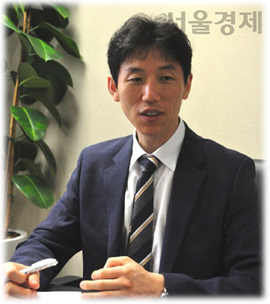| 일 | 월 | 화 | 수 | 목 | 금 | 토 |
|---|---|---|---|---|---|---|
| 1 | 2 | 3 | 4 | 5 | ||
| 6 | 7 | 8 | 9 | 10 | 11 | 12 |
| 13 | 14 | 15 | 16 | 17 | 18 | 19 |
| 20 | 21 | 22 | 23 | 24 | 25 | 26 |
| 27 | 28 | 29 | 30 |
- Canonical Politics
- power and organization
- Political Change
- Operation of the 2nd Law
- politics of Inner Circle
- political organization
- Task Delegates of the Ruler: Inner Circle
- mechanism of politics
- Power
- Regime Change
- Differences in Individual Abilities and Tendencies
- the 2nd law
- Political power
- the 3rd Law of politics
- new political science
- Political Regime
- Order of Choice
- politics
- Mathematical Model of politics
- Orderliness of Choice
- Mathematical Model of political science
- Value Systems
- survival process theory
- politics and war
- Political Regimes
- 1st Law of politics
- political phenomena
- Cohesion Force
- Samjae Capacities
- Samjae Capacity
- Today
- Total
New Political Science
b. Formulation of the 1st Law 본문
b. Formulation of the 1st Law
(Though the content is somewhat repetitive) To put it more systematically and in detail, the 1st law means the following.
[Ch.3.102] (Basicity) The basis of all political capacities is the Samjae capacities (armed capacity, economic capacity, and ideological capacity). ㉠ All types of political power are constituted by Samjae capacities (fundamentalicity), ㉡ and each power of Samjae capacities is independent and cannot be substituted for each other (independence).
[Ch.3.103] (Spatio-temporal Structure) The spatiotemporal ranges in which each power of Samjae capacities operates are different from each other. Armed capacity is strong in narrow regions, but acts temporarily, while economic capacity acts gradually in intermediate regions to a visible degree, and ideological capacity is weak in broad regions, but acts very persistently.
[Ch.3.104] (Establishment Conditions of each Capacity) There is an order for each of the Samjae capacities to effectively operate. Armed capacity operates without any social conditions, and economic capacity only operates under the protection of armed capacity, and ideological capacity only operates on the basis of economic capacity[Ch.2.19].
[Ch.3.105] (Order of Interaction) The order for each of the Samjae capacities to effectively operate is ⓐarmed capacity, ⓑeconomic capacity, ⓒideological capacity.
[Ch.3.106] (Effect of Power) The structure of the individual and relative power held by each political actor is determined by the ratio and size of the elements of the Samjae capacities, and how the power can politically act under given conditions is determined by the structure of the political power.
According to the 1st law, the following phenomena occur:
[Ch.3.107] A political actor who uses economic capacity without armed capacity or ideological capacity without the foundation of economic capacity will fail in achieving their goal.
[Ch.3.108] During a limited period, the political actor with the greatest armed capacity will obtain the greatest benefit (their own survival capacity), followed by the political actor with the greatest economic capacity. Despite its strength, ideological capacity alone will yield the least benefit during the same period.
[Ch.3.109] As political conditions gradually worsen, political actors will use capacities in the order of "ideological capacity→economic capacity→armed capacity." Worsening conditions mean that the conditions are unfavorable for the survival (competition) of political actors, making it difficult to achieve their goal.
[Ch.3.110] To expand the scope and power of political influence together, Samjae capacities must be balanced.
[Ch.3.111] Generally, economic capacity is necessary for the sustainability of armed capacity, and ideological capacity is necessary for the sustainability of armed capacity and economic capacity over a long period.
'Mechanism of Politics' 카테고리의 다른 글
| b. What is Samjae Capacity? (0) | 2023.12.11 |
|---|---|
| (2) a. ㉠ Interdependence of Power Relations (0) | 2023.12.11 |
| a. ㉡ Schematic Understanding of The 1st Law (0) | 2023.12.11 |
| a. ㉠ Detailed Contents of The 1st Law (0) | 2023.12.11 |
| Chapter 3. A. (1) Intuitive Explanation through Tables and Diagrams (0) | 2023.12.11 |


